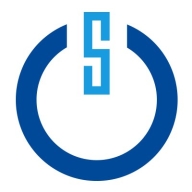

CRITICALSTART and Tines are competing security automation platforms. Tines appears to have the upper hand due to its advanced automation capabilities, despite CRITICALSTART's strong user satisfaction and cost-effective support.
Features: CRITICALSTART provides robust threat detection and responsive managed services. It offers real-time monitoring and generates user-friendly reports. Tines offers powerful automation features and extensive customization options. It integrates with multiple systems, enabling efficient process automation and deep customization.
Ease of Deployment and Customer Service: Tines utilizes a cloud-based deployment model with excellent technical support, ensuring ease of use and setup. CRITICALSTART delivers both cloud and hybrid deployment options, which accommodate various IT infrastructures and are supported by comprehensive customer service. The versatility of CRITICALSTART's hybrid solutions adds to its flexibility.
Pricing and ROI: CRITICALSTART offers a competitive pricing model with reliable ROI through effective threat management services. Tines may involve higher setup costs but provides significant ROI due to its automation capabilities, which can result in long-term savings by reducing manual labor. CRITICALSTART presents a more budget-friendly entry, while Tines offers potential long-term financial returns through enhanced operational efficiency.

The cybersecurity landscape is growing more complex by the day with the arrival of new threats and new tools supposedly designed for combating them. The problem is it’s all creating more noise and confusion for security professionals to sort through.
CRITICALSTART is the only MDR provider committed to eliminating acceptable risk and leaving nothing to chance. They believe that companies should never have to settle for “good enough.” Their award-winning portfolio includes end-to-end Professional Services and Managed Detection and Response (MDR). CRITICALSTART MDR puts a stop to alert fatigue by leveraging the Zero Trust Analytics Platform (ZTAP) plus the industry-leading Trusted Behavior Registry, which eliminates false positives at scale by resolving known-good behaviors. Driven by 24x7x365 human-led, end-to-end monitoring, investigation and remediation of alerts, their on-the-go threat detection and response capabilities are enabled via a fully interactive MOBILESOC app.
Tines automates manual security tasks, incident response workflows, and tool orchestration, enhancing efficiency by reducing repetitive processes and improving response times.
Users leverage Tines to automate complex security and incident response operations, integrating seamlessly with other platforms to streamline tasks. Its no-code automation capabilities and strong security features are particularly valued. While it enhances operational efficiency, users suggest improvements in customer support, documentation, and additional integration capabilities to overcome learning curve challenges. Some mention occasional latency issues and seek more customization, training resources, and clearer pricing structures. Enhanced scalability and detailed error logs are desired for smoother troubleshooting.
What are Tines' most important features?
What benefits and ROI should users look for?
In specific industries, Tines is implemented to automate security operations in sectors like finance, healthcare, and technology, where rapid incident response and integration with other platforms are crucial. Automating complex workflows without code is particularly beneficial in these fast-paced environments.
We monitor all Security Orchestration Automation and Response (SOAR) reviews to prevent fraudulent reviews and keep review quality high. We do not post reviews by company employees or direct competitors. We validate each review for authenticity via cross-reference with LinkedIn, and personal follow-up with the reviewer when necessary.